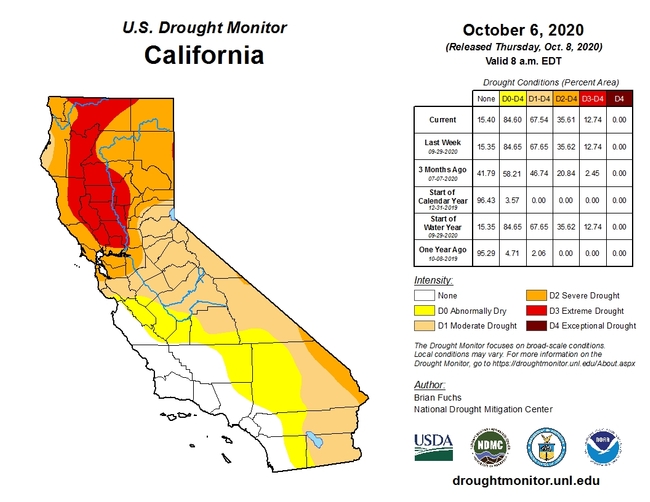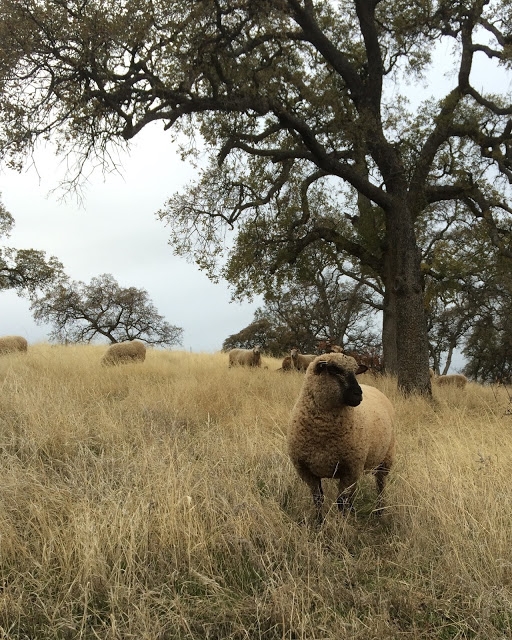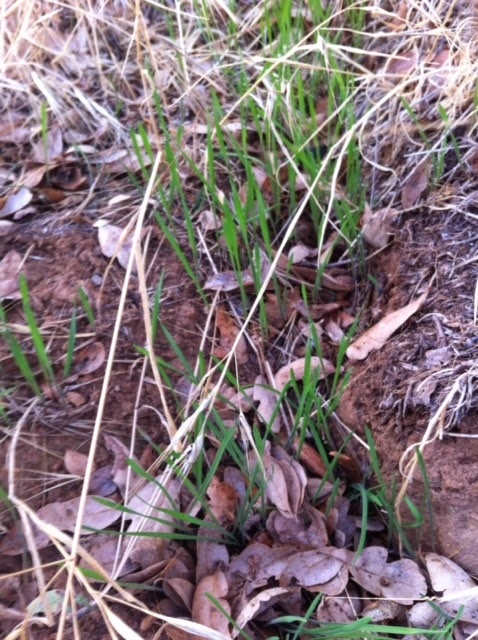In the meantime, how are you going to cope?
Having lived (and ranched) through California's 1000-year drought from 2012-2015, I often find myself recalling the autumn of 2013. Believe it or not, we had a germinating rain on September 3 - I measured 0.75" of rain here in Auburn. Just under three weeks later, we received another inch of rain. The combination was enough to get our grass started! But a fellow rancher - I can't remember who - told me never to trust a grass year that started before Halloween. October turned dry and November turned cold and dry - between October 1 and December 31, we measured just over two inches of rain. The grass that had looked so promising in late September was gone by New Year's Day 2014. My rancher friend was correct.
The Sierra Foothills typically experience a prolonged dry spell from late spring through early fall - part of living in a Mediterranean climate. Every autumn, I look forward to the first germinating rain - the storm that is the dividing line between brown grass and green grass on our annual rangelands. Weather forecasts from two weeks ago suggested that we'd get this storm last weekend; reality proved otherwise, and our weekend was cool but dry. And the most recent California drought map indicates that our normal dry spell has intensified into moderate-to-severe drought.
Looking back at 35 years of monitoring data from the UC Sierra Foothill Research and Extension Center (SFREC) in Browns Valley, I see a record of uncertainty and variability. The earliest germinating rain at SFREC was recorded on September 2, 2000. The latest occurred just two years later, on December 12, 2002. Over the last 35 years, the first germinating rain of the fall occurred around October 21. But in 29% of the last 35 years, a germinating rain hasn't arrived until after November 1.
Why does this matter? As most ranchers will know, we usually reach a point in mid-December when the days are too short and the temperatures (both air and soil) are too cool to support grass growth, regardless of soil moisture. I call this our winter dormant period - the timeframe where we have to get buy on the grass that grew from germination to dormancy (and last year's dry grass). If germination happens in mid-October, and we get follow-up rains, this means we have 45 days worth of growth at least. If germination happens a month later, we don't have much grass.
Because of this uncertainty and variability, most of us are conservative in our stocking rates - we keep the number of breeding animals we know we can sustain through a dry fall. Many of us use supplemental protein to be able to utilize the dry forage we saved from the previous spring. Others try to match our production cycle to the forage cycle, calving or lambing when we're likely to have adequate high quality forage.
As I think back on my experiences in 2013-2014, I think there is a difference between short-term drought and long-term drought. Our preparation strategies, like a conservative stocking rate and fitting our production calendar to the forage, help us deal with both. Response strategies, however, can be ramped up as the severity of the drought escalates. Buying supplemental feed, for example, might help bridge a dry fall; buying replacement feed to get through a dry two or three years is a recipe for bankruptcy. Similarly, deciding not to buy in stockers or feeder lambs in a dry fall is a short-term solution; selling breeding animals or replacement females is a more drastic step that might be necessary in a long-term drought.
One of the most important lessons I learned in the last drought is that we constantly need to be thinking about how much forage we have ahead of us, and talking about key decision dates. At the moment, we have enough dry grass to get through the end of January (provided we give the sheep supplemental protein). At that point, our ewes will be entering the last third of their gestation period - and their nutritional demands will start ramping up. We typically give the ewes their pre-lambing vaccines during the third week of January. If we're still dry at that stage, we'll have some difficult decisions to make. In the meantime, I'll keep doing my rain (and germination) dance! Don't worry - I won't post video!
For regular updates on forage and ranching weather conditions, check out my Instagram feed at @flyingmule!

